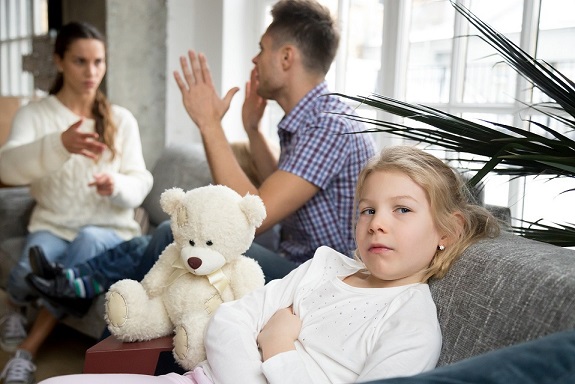The relationship model at home and the quality of the emotional bond between the members of the family group depend, to a large extent, on the everyone's personal baggage and each of the members of the family group. The family is the first axis of socialization for children and the level of interaction that exists in this area determines the life of its members, also, outside of it.
Faced with the lifelong commitment to the couple, the value of fertility, sacrifice, the marked asymmetry between parents and children and very defined gender roles, democratization in the relationship between spouses, primacy and of companionship, the voluntary and rational use of conception, greater equity in gender roles, the right to self-realization and greater autonomy in the exercise of the couple (Estévez, Jiménez and Musitu, 2007).

All this has led, among other things, to the teenagers try to set limits with their parents and try to ensure that there is a level in their personal life to which parents should not access, no matter how concerned they may be about them.
For this same reason, we are experiencing a transition from a protectionist model of parents to children to a model where children claim independence when making decisions about circumstances that occur in their lives, but paradoxically, it is the historical moment in where sons and daughters extend their coexistence with their parents until ages that would previously have been considered advanced or very advanced.
On many occasions, these and other circumstances bring with them a series of problems that lead to conflicts: couples, intergenerational, custody issues...
Family mediation as a pillar for peaceful conflict resolution
Family mediation part of 1919 in the US, in the legislation existing at that time on family conciliation. A fact refuted and consolidated decades later (60-70) when mediation began to be systematically used in cases of separation.
Currently, in that country, each state has its own legislation on family mediation. In the case of Spain, the history dates back to 1981 with the implementation of the Spanish Divorce Law. Being the the 90's when in Madrid, Barcelona and the Basque Country, the first private entities dedicated to the exercise of family mediation.
The definition of family mediation is complicated, because constant evolution of the family, as well as the private scope of the issues that arise in the family environment, which affects the casuistry in family relationships (Pérez Giménez, 2006). The family mediation consists of the use of this alternative method of conflict resolution in the field of Family Law.
The objective is to reach a comprehensive solution to a conflict between disputing parties (they may be two or more people), thereby avoiding going to court. The goal of this process is to reach a lasting and fair agreement, the result of commitment and understanding between the parties.

He The family mediator must act as a guide and catalyst through multidirectional dialogue that enhances the reflective analysis of the parties. to be aware of the causes of conflict situations. At times, it prevents conflict escalation and helps parties overcome a conflict impasse.
The mediator cannot be frivolous or inept in doing his task. It is very clear about a fundamental precept: power rests with the parties, therefore, it must perform its task consciously and constructively to lead the parties to agree on acceptable terms of agreement.
For everything described, the objectives pursued with it are the following:
- Build relationships and promote communication, increasing psychological and personal satisfaction.
- Reduce tensions and promote peaceful behavior, encouraging cooperation.
- Limit the negative consequences for children after a divorce.
- Assume the new family situation.
- Guarantee the right of minors to have both parents on equal terms.
- Work on feelings of guilt.
- Provide adequate information for all family members.
- Allow responsibilities to be assumed by the participants.
- Adjust agreements or options to real needs.
- Avoid the winning/losing feeling.
- Promote flexibility and collaboration in the face of changes.
- Reduce the emotional, economic and temporal cost.
- Achieve a high degree of compliance with judicial resolutions.
- Allow family members to manage their own agreements.
- Promote responsible behavior, especially with respect to agreements made in relation to children.
- Reorganize family relationships at the time of separation or after it takes place.
- Return responsibility to the parties in conflict, both with respect to the agreements they may adopt regarding children, or the available legal agreements that may be agreed upon.
- Etc.




